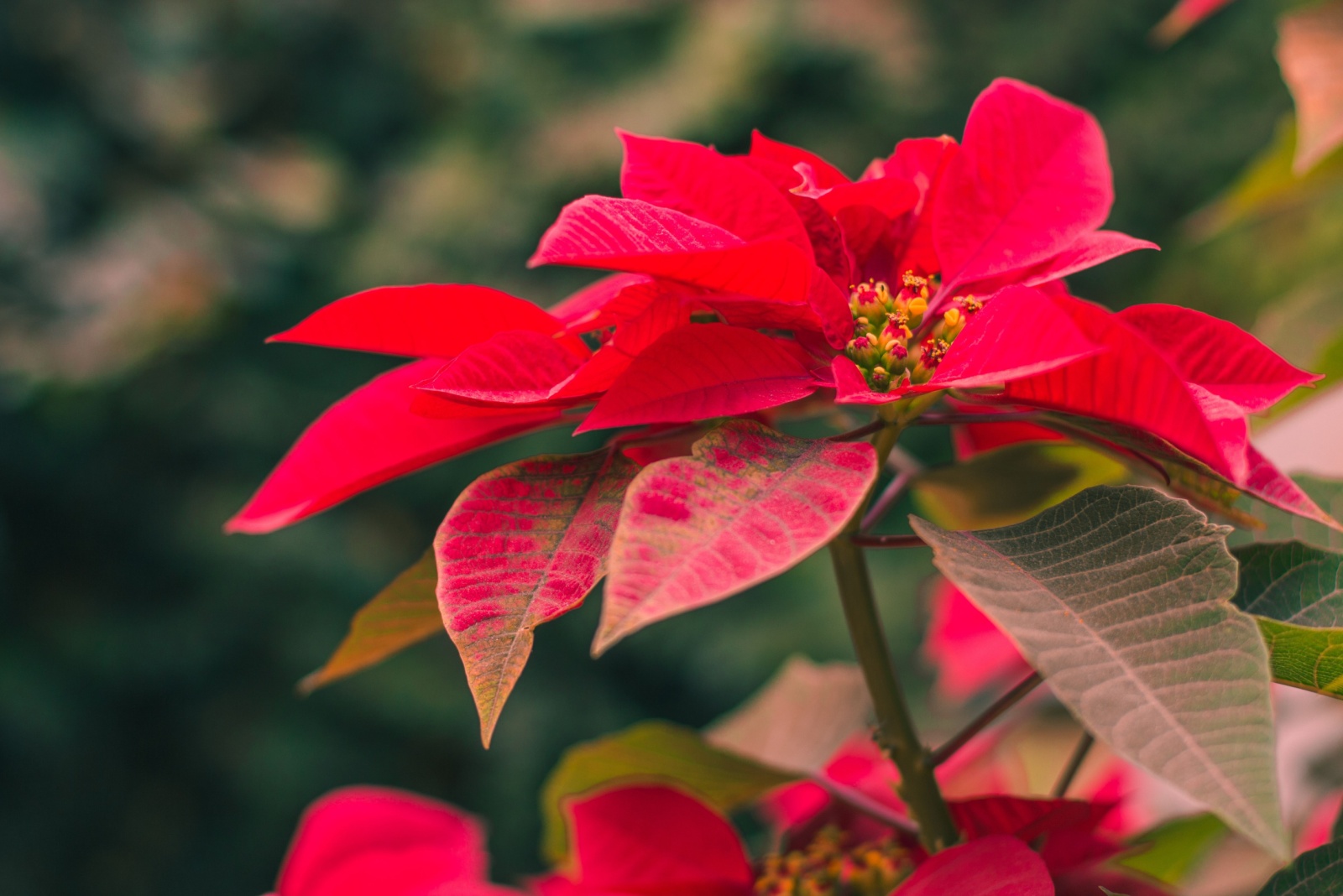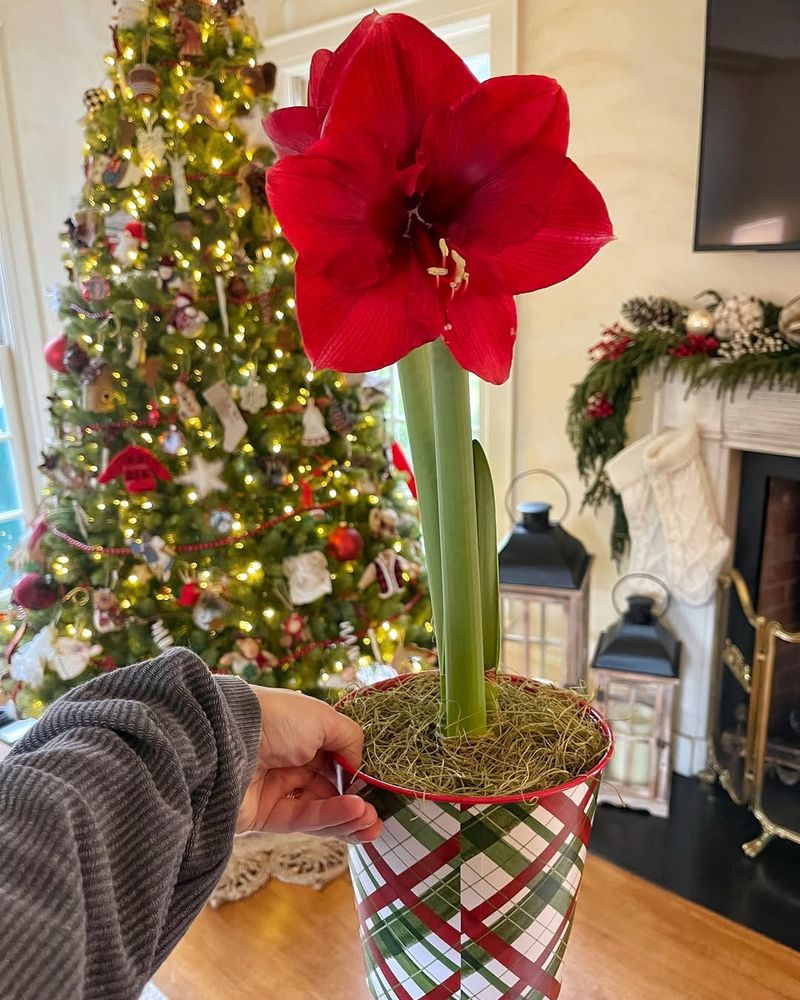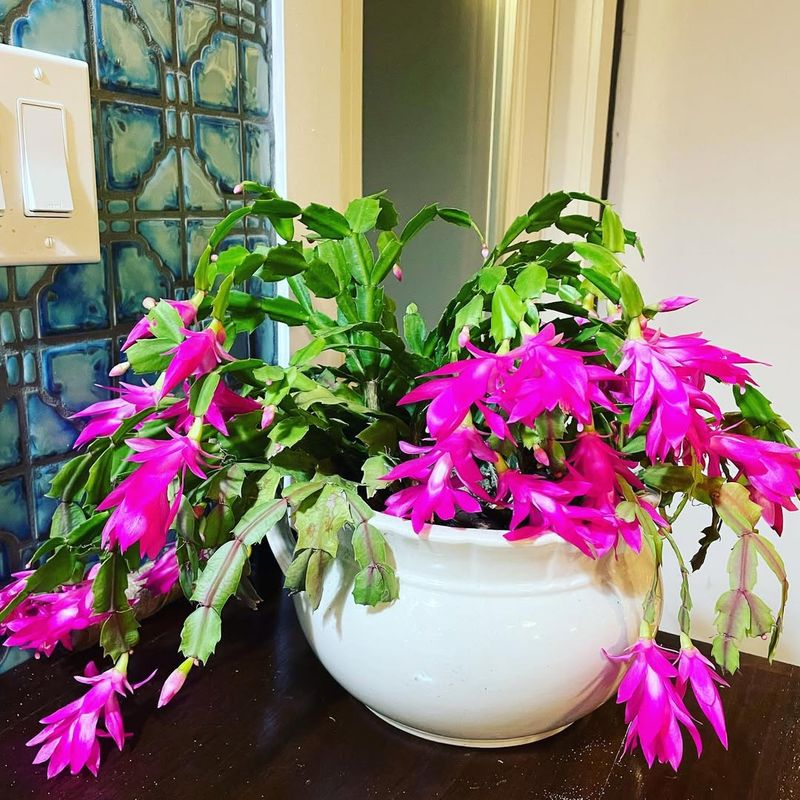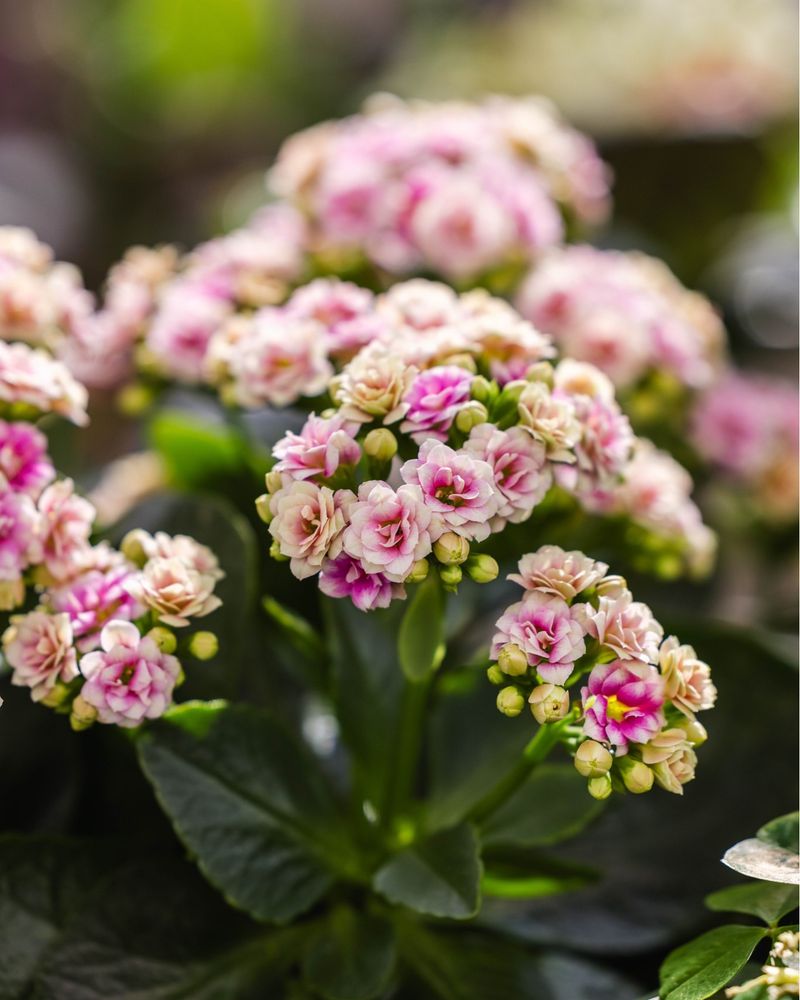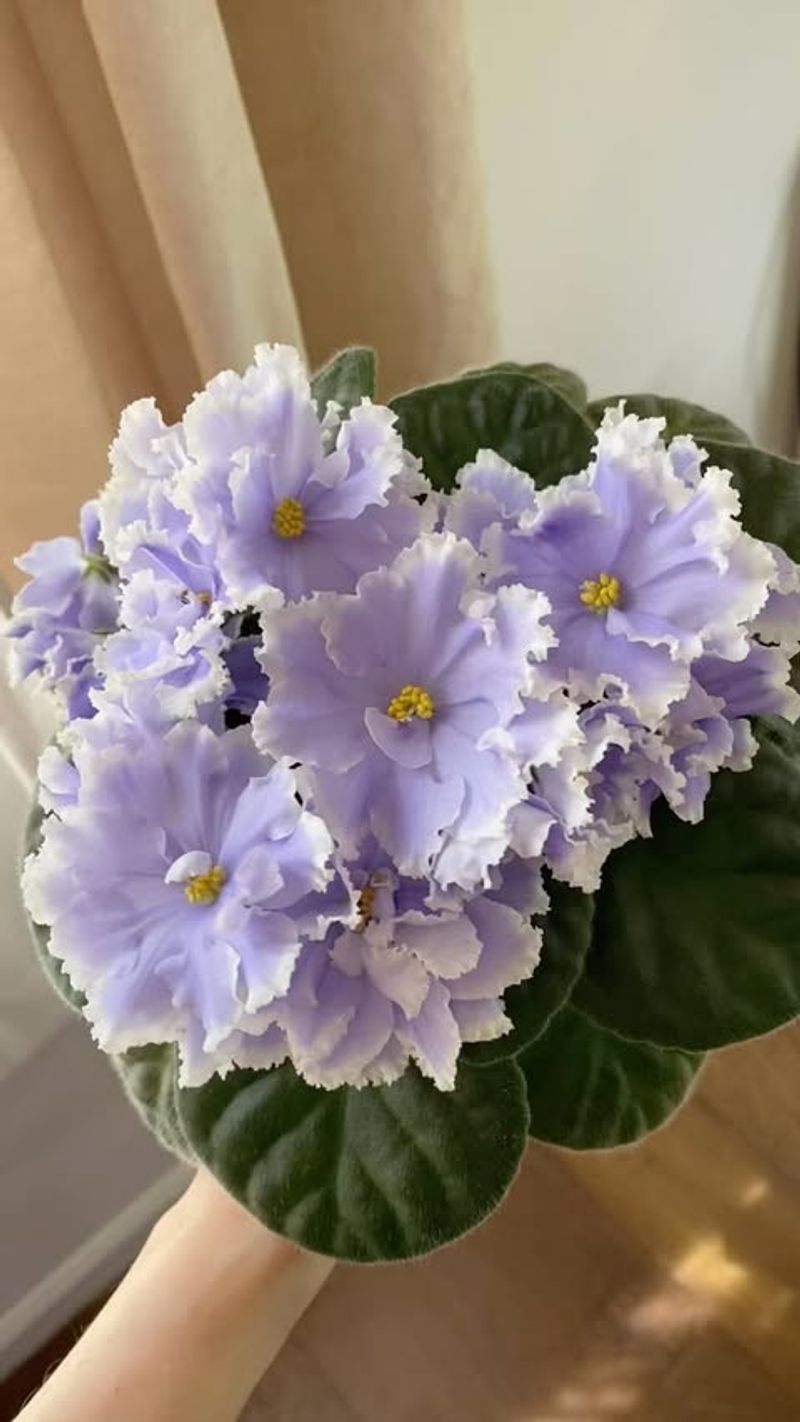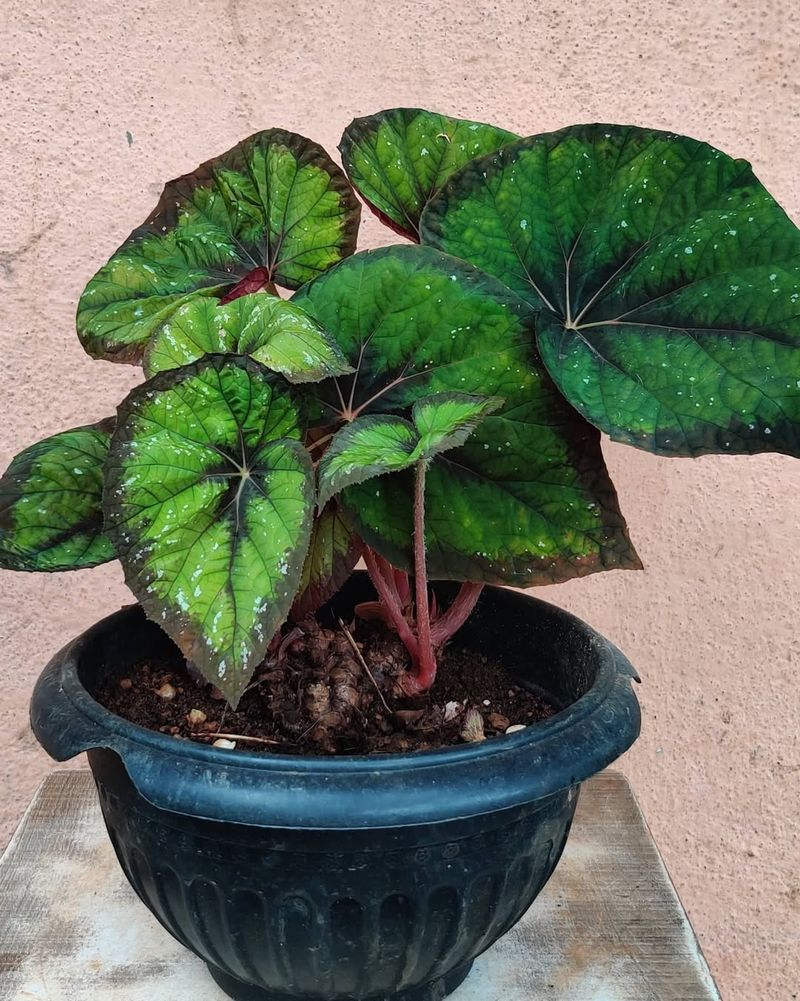Texas homes crave color as winter sets in, and classic blooms step into the spotlight with bold style and old-school charm. These cold-season favorites pack warmth and attitude and can turn any room into a cozy retreat.
Their vibrant shades cut through dreary days like a spark through dry tinder, and many homeowners now pull these beauties indoors for a welcome dose of cheer.
1. Amaryllis
Bold, trumpet-shaped flowers make amaryllis a showstopper during winter months. Each bulb produces massive blooms in shades of red, white, pink, or even striped combinations that can reach up to eight inches across.
Place your amaryllis near a sunny window and watch it grow surprisingly fast, sometimes shooting up several inches in just days. Water moderately and rotate the pot occasionally so the stem grows straight instead of leaning toward the light.
Did you know? A single amaryllis bulb can bloom for years if you care for it properly after flowering.
2. Cyclamen
Heart-shaped leaves and delicate upswept petals give cyclamen an elegant charm that brightens any room. Cool temperatures actually help these plants bloom longer, making them ideal for Texas winters when indoor heating isn’t constantly running.
Keep the soil moist but never soggy, and water from the bottom to prevent crown rot. Cyclamen prefers bright, indirect light and will reward you with months of continuous flowers in shades of pink, red, white, or purple.
Remove faded blooms regularly to encourage fresh flowers throughout the season.
3. Christmas Cactus
Despite its name, this tropical plant isn’t actually a desert cactus but a forest dweller that loves humidity. Cascading stems produce spectacular tubular flowers in pink, red, white, or even yellow when conditions are just right.
Triggering blooms requires about six weeks of longer nights and cooler temperatures, which naturally happens in fall. Once buds form, avoid moving the plant or changing watering habits, as stress can cause buds to drop.
With proper care, your Christmas cactus can live for decades and become a cherished family heirloom.
4. Paperwhite Narcissus
Nothing announces winter quite like the sweet fragrance of paperwhites filling your home. These easy-to-grow bulbs require no soil and will bloom in just water and pebbles, making them perfect for beginners or busy Texas households.
Set bulbs in a shallow dish with stones for support, add water just below the bulb base, and place in bright light. Tall stems topped with clusters of white or cream flowers appear within three to four weeks.
Stagger plantings every two weeks for continuous blooms throughout winter.
5. Kalanchoe
Thick, glossy leaves and tight clusters of tiny flowers make kalanchoe a low-maintenance winter favorite. This succulent thrives on neglect, preferring to dry out completely between waterings, which suits forgetful plant parents perfectly.
Blooms last for weeks in brilliant shades of red, orange, yellow, pink, or white. Place kalanchoe in the brightest spot you have, like a south-facing window, and it will reward you with vibrant color all winter long.
Pinch off spent flower clusters to promote reblooming and maintain a tidy appearance throughout the season.
6. Orchids
Exotic beauty meets surprising toughness in these popular houseplants that bloom for months with minimal fuss. Phalaenopsis orchids, the most common type, feature graceful arching stems loaded with flowers that can last eight to twelve weeks.
Contrary to popular belief, orchids aren’t difficult if you follow simple rules: bright indirect light, weekly watering, and good air circulation. Let the potting medium dry slightly between waterings, and never let roots sit in standing water.
After blooming, cut the stem above a node to potentially trigger a second flowering spike.
7. African Violet
Fuzzy leaves and cheerful flowers have made African violets beloved Texas houseplants for generations. These compact plants bloom almost year-round when given proper care, producing clusters of purple, pink, white, or bi-colored flowers above rosettes of velvety foliage.
Room temperature water applied from the bottom works best, as cold water splashed on leaves causes unsightly spots. Bright, filtered light encourages continuous blooming, but avoid direct sun which can scorch the delicate leaves.
Feed monthly with diluted fertilizer formulated specifically for African violets to maintain healthy growth and abundant flowers.
8. Begonia
Glossy leaves and abundant clusters of flowers make begonias reliable winter performers indoors. Many varieties bloom continuously throughout the year, providing steady color when outdoor gardens are dormant and dreary.
Rex begonias offer stunning foliage patterns, while wax and angel wing types produce masses of flowers in pink, red, white, or coral. Keep soil consistently moist but not waterlogged, and provide bright, indirect light for best results.
Pinch back leggy stems to encourage bushier growth and more flowering points as the plant matures throughout winter.
9. Poinsettia
Vibrant red, pink, or white bracts make poinsettias the undisputed symbol of winter holidays in Texas homes. What most people call flowers are actually colorful leaves called bracts, while the true flowers are tiny yellow centers.
Keep your poinsettia in bright, indirect light and water when the soil surface feels dry to the touch. Avoid cold drafts and sudden temperature changes, which can cause leaves to drop rapidly.
With proper care, poinsettias can stay colorful for months, extending your enjoyment well beyond the holiday season into early spring.

